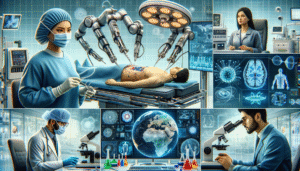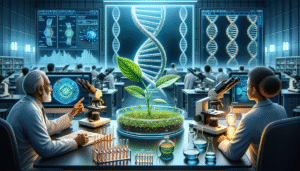
Climate Change: Reshaping Our World
The Unfolding Reality
Climate change, driven primarily by human activities, is no longer a distant threat; it’s a present reality impacting every corner of the globe. The burning of fossil fuels (coal, oil, and natural gas) for energy, deforestation, industrial processes, and agriculture release greenhouse gases (GHGs) into the atmosphere. These gases, including carbon dioxide, methane, and nitrous oxide, trap heat, causing a gradual warming of the planet. This warming trend, observed over decades, has far-reaching consequences, disrupting natural systems and impacting human societies.
A Cascade of Consequences: Environmental Impacts
The effects of climate change are multifaceted and interconnected, creating a cascade of consequences across the environment. Rising global temperatures lead to the melting of glaciers and polar ice caps, contributing to rising sea levels. Coastal communities face increased risks of flooding and erosion, displacing populations and threatening infrastructure. Ocean acidification, another consequence of increased atmospheric CO2, poses a significant threat to marine ecosystems, particularly coral reefs and shellfish.
Changes in precipitation patterns are also evident, with some regions experiencing more intense rainfall and flooding, while others face prolonged droughts. These shifts exacerbate water scarcity issues, impacting agriculture, human health, and ecosystem stability. Extreme weather events, including hurricanes, heatwaves, and wildfires, are becoming more frequent and intense, causing widespread damage and loss of life. The delicate balance of ecosystems is disrupted, affecting biodiversity and species distribution. Many species are forced to migrate or face extinction as their habitats change.
Human Impacts: A Global Challenge
The impact of climate change extends beyond the natural world, significantly affecting human societies. Food security is threatened by changing growing seasons, water scarcity, and increased pest infestations. Economic stability is undermined by the costs of adapting to climate change impacts, including infrastructure damage and disaster relief. Human health is directly affected by extreme heat, increased air pollution, and the spread of vector-borne diseases.
Displaced populations due to rising sea levels and extreme weather events create humanitarian crises and social instability. Vulnerable communities, particularly those in developing countries, bear the brunt of climate change impacts, exacerbating existing inequalities. Access to essential resources like water and food becomes increasingly challenging, leading to conflict and displacement.
Mitigation and Adaptation: Charting a Path Forward
Addressing the climate crisis requires a two-pronged approach: mitigation and adaptation. Mitigation focuses on reducing GHG emissions to slow down the pace of climate change. Transitioning to renewable energy sources, such as solar and wind power, is crucial. Improving energy efficiency in buildings and transportation also plays a significant role. Sustainable land management practices, including reforestation and afforestation, can help sequester carbon dioxide from the atmosphere.
Adaptation involves adjusting to the current and projected impacts of climate change. This includes developing resilient infrastructure, implementing early warning systems for extreme weather events, and diversifying agricultural practices. Coastal communities need to invest in protective measures against rising sea levels, such as seawalls and managed retreat. Water management strategies, including water conservation and efficient irrigation techniques, are essential for adapting to changing precipitation patterns.
The Role of Technology and Innovation
Technological advancements play a vital role in both mitigation and adaptation efforts. Innovations in renewable energy technologies, energy storage, and carbon capture and storage are essential for reducing GHG emissions. Climate modeling and data analysis provide valuable insights for understanding and predicting climate change impacts, enabling effective adaptation strategies. Developing climate-resilient crops and agricultural practices can enhance food security in a changing climate.
Global Cooperation: A Shared Responsibility
Addressing the global challenge of climate change requires international cooperation and collective action. The Paris Agreement, a landmark international accord, aims to limit global warming to well below 2 degrees Celsius above pre-industrial levels. Countries have committed to reducing their GHG emissions and supporting developing nations in their mitigation and adaptation efforts. Collaboration between governments, businesses, and civil society is crucial for achieving these goals. Sharing best practices, investing in research and development, and providing financial support to vulnerable countries are essential components of a global response.
Individual Actions: Making a Difference
While large-scale systemic changes are necessary, individual actions also play a significant role in addressing climate change. Reducing our carbon footprint through conscious consumption choices, such as using energy-efficient appliances, reducing meat consumption, and choosing sustainable transportation options, can collectively make a difference. Supporting businesses and organizations committed to sustainability and advocating for climate-friendly policies can further amplify individual impact.
















